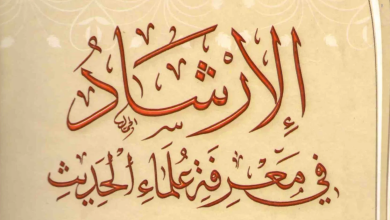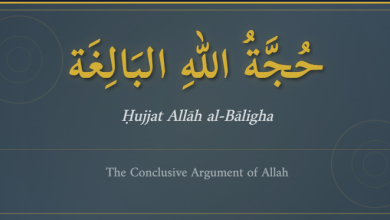A Gem Among Stones: al-Ṣaghānī’s Manuscript of Ṣaḥīḥ al-Bukhārī
A Gem Among Stones: al-Ṣaghānī’s Manuscript of Ṣaḥīḥ al-Bukhārī
By Shaykh Muntasir Zaman
Modern concerns surrounding the disappearance of al-Bukhārī’s exemplar stem from a failure to grasp the nuances of Ḥadīth transmission. Consequently, Alphonse Mingana (d. 1937 CE), for one, has erroneously criticized the authorship of Ṣaḥīḥ al-Bukhārī.[1] In general, Ḥadīth scholars deemed oral transmission as the most authoritative method of establishing ḥadīths and were, therefore, not as concerned with the disappearance of original manuscripts.[2] The transmission of Ṣaḥīḥ al-Bukhārī, al-Qasṭāllānī (d. 932 AH) explains, rests primarily on the medium of oral transmission, not on manuscripts.[3]
However, these concerns can be relatively assuaged by the presence of a valuable manuscript that was cross-referenced with al-Firabrī’s (d. 320 AH) holograph: Raḍī al-Dīn al-Ṣaghānī’s (d. 650 AH) manuscript. Given his acquaintance with al-Bukhārī, frequent study of the Ṣaḥīḥ under him,[4] and access to al-Bukhārī’s exemplar, al-Firabrī’s manuscript of the Ṣaḥīḥ was on par with the original. As such, the significance of a manuscript that was cross-referenced with al-Firabrī’s holograph cannot be overstressed. This article will shed light on al-Ṣaghānī’s biography and the value of his manuscript of the Ṣaḥīḥ.
Biography
The Ḥanafī lexicographer, Raḍī al-Dīn al-Ḥasan, was born in Lahore 577 AH. He owes his sobriquet “al-Ṣaghānī” to his ancestral land in the upper Oxus province of Chāghāniyān—Arabicized to Ṣāghāniyān.[5] After receiving his primary education in Ghaznah, present-day Afghanistan, his academic travels took him to the broader Indian subcontinent, Yemen, Makkah, and Baghdad—at the Niẓāmiyyah. In 617 AH, while in Baghdad, he served as an envoy to India for the Abbasid caliph al-Nāṣir and later for al-Mustanṣir.[6] He was a polymath and a prolific author,[7] described by al-Dimyāṭī (d. 705 AH) as an “authority in language, Islamic law, and Ḥadīth.”[8]
His forte was lexicography; he wrote a 20-volume compendium entitled, “al-ʿUbāb al-Zākhir.” He equally wielded a strong command of the Ḥadīṭh sciences as evidenced by his countless works like Mashāriq al-Anwār—a digest of the Ṣaḥīḥayn celebrated as the earliest contribution to Ḥadīth from an Indian scholar,[9] a gloss on Ṣaḥīḥ al-Bukhārī, a biographical dictionary on al-Bukhārī’s mentors,[10] and treatises on forgeries,[11] to name the most prominent.[12] In addition, he mastered al-Khaṭṭābī’s Maʿālim al-Sunan and counseled his students to memorize al-Qāsim ibn Sallām’s Gharīb al-Ḥadīth.[13] He passed away on the 19th of Shaʿbān, 650 AH, in Baghdād, but his body was relocated to Makkah where he was buried according to his final wishes.[14]
Al-Ṣaghānī’s Manuscript of the Ṣaḥīḥ
As his oeuvre suggests, al-Ṣaghānī took a special interest in al-Bukhārī’s Ṣaḥīḥ; after all, he authored a digest, gloss, and biographical dictionary on the Ṣaḥīḥ. Furthermore, he studied the Ṣaḥīḥ under several direct students of Abū al-Waqt al-Sijzī (d. 553 AH), a key transmitter of the work.[15] During his stay in Baghdad, al-Ṣaghānī spent a considerable amount of time editing a particular manuscript of Saḥīḥ al-Bukhārī, later entitled the Baghdādī manuscript. This was not the first manuscript of the Ṣaḥīḥ that he wrote. Earlier while sojourning in Aden, Yemen, he wrote several manuscripts of the Ṣaḥīḥ, which he left there as endowments.[16] The most notable value of the Baghadādī manuscript lies in al-Ṣaghānī’s cross-analysis of it with another key manuscript: al-Firabrī’s holograph.[17]
The reader may recall that al-Firabrī had access to al-Bukhārī’s exemplar that was transcribed by his parchment bearer Abū Jaʿfar al-Warrāq.[18] A close reading of al-Ṣaghānī’s manuscript further reveals that he had access to Ibrāhīm ibn Maʿqil’s (d. 295 AH) recension,[19] a direct transmitter from al-Bukhārī.[20] In many places, al-Ṣaghānī alludes to material found exclusively in al-Firabrī’s manuscript, e.g. commentary and preferences from al-Bukhārī,[21] added information on the transmitters,[22] and continuity of truncated chains.[23] In one place, he consults al-Firabrī’s manuscript to respond to al-Ismāʿīlī’s critique of al-Bukhārī.[24] Dr. Sāmiḥ Mutawallī details the locations of at least ten copies of al-Ṣaghānī’s manuscript in libraries throughout Turkey, Saudi Arabia, and England.[25]
Further underscoring the value of this manuscript, subsequent scholars have put it to good use. Distinguished commentators on the Ṣaḥīḥ like Shams al-Dīn al-Kirmānī (d. 786 AH),[26] Badr al-Dīn al-ʿAynī (d. 855 AH),[27] Ibn Ḥajar al-ʿAsqalānī (d. 852 AH),[28] and Shihāb al-Dīn al-Qasṭallānī (d. 923 AH)[29] have cited material from al-Ṣaghānī’s manuscript. In his magnum opus, Fatḥ al-Bārī, Ibn Ḥajar, for instance, cites the manuscript over a hundred times.[30]
The Indian lithographic print of the Ṣaḥīḥ, meticulously produced with marginal notes by Aḥmad ʿAlī al-Sahāranpūrī (d. 1297 AH/1880 CE),[31] is an invaluable yet underappreciated work of scholarship.[32] Al-Sahāranpūrī spent ten years critically analyzing and refining his personal copy of the Ṣaḥīḥ with a number of important manuscripts like that of his teacher Shāh Muḥammad Isḥāq (d. 1262 AH), an extension of ʿAbd Allāh ibn Sālim al-Baṣrī’s legendary copy.[33] Between 1851-1854 CE—decades before the celebrated Amīriyyah edition,[34] he produced the earliest print of the Ṣaḥīḥ in two volumes through his Delhi based printing house, Maṭbaʿ Aḥmadī.[35] Most important for our purposes, he had at his disposal al-Ṣaghānī’s manuscript, for which he used the symbols ṣād/ghayn.[36] There are instances where al-Sahāranpūrī noted variants from al-Ṣaghānī that his fellow commentators did not draw attention to—not even Ibn Ḥajar.[37]
Conclusion
As contentions surrounding the disappearance of al-Bukhārī’s exemplar continue to arise, one should bear in mind the famous maxim: unawareness of something is not proof of its nonexistence. Countless manuscripts that were once assumed to have vanished have recently been rediscovered.[38] However, even if al-Bukhārī’s exemplar does not resurface, it will not affect the veracity of the text. The practice of oral tradition has preserved this and other texts from adulteration, not to mention the presence of critically acclaimed secondary and tertiary copies. Having been cross-referenced with al-Firabrī’s holograph—a manuscript that is on par with the exemplar, al-Ṣaghānī’s manuscript of the Ṣaḥīḥ has preserved for us an accessible, near-replica of the original.
[1] Mingana, An Important Ms. of Bukhārī’s Ṣaḥīḥ, in The Journal of the Royal Asiatic Society of Great Britain and Ireland, no. 2 (1936), p. 289.
[2] ʿAbd al-Qādir Jalāl, Iʿlāʾ al-Bukhārī, p. 63.
[3] Al-Qasṭallānī, Irshād al-Sārī, vol. 1, p. 24.
[4] Al-Firabrī studied the Ṣaḥīḥ under al-Bukhārī for the first time in Firabr in 248 AH, the second time in Bukhara in 252 AH, and the third time again in Firabr from 253 AH to 255 AH. See Ibn Nuqṭah, al-Taqyīd, p. 126; Mutawallī, Ziyādāt al-Imām Muḥammad ibn Yūsuf ibn Maṭar al-Firabrī ʿalā Ṣaḥīḥ al-Bukhārī, pp. 29-31; al-Aḥdab, al-Imām al-Bukhārī wa Jāmiʿuhu al-Ṣaḥīḥ, pp. 226-27.
[5] Raḥmān ʿAlī, Tadhkirah Ulamā-e Hind, (trans. Zayn al-ʿĀbidīn al-Aʿẓamī), p. 86; Ramzi Baalbaki, “al-Ṣaghānī,” in Encyclopedia of Islam, Second Edition; Ibn al-Sāʿī, al-Durr al-Thamīn, p. 344. Al-Saghān is also known as al-Ṣāghān with an elongated alif. See al-Ḥamawī, Muʿjam al-Udabāʾ, vol. 3, p. 1015; al-Hijrānī, Qilādat al-Naḥr, vol. 5, p. 311.
[6] Ibn al-Sāʿī, al-Durr al-Thamīn, p. 344; Ibn al-Fuwaṭī, Majmaʿ al-Ādāb, vol. 6, p. 490.
[7] He is also recognized for his unique style of writing. For instance, beneath the letter sīn, he would write a letter sīn in a smaller font to avoid confusing it for the letter shīn. On al-Ṣaghānī’s style of writing, see Khān, Introduction to al-Murtajal, p. 11; Abū Ghuddah, Footnotes on Taṣḥīḥ al-Kutub, p. 28.
[8] Al-Dhahabī, Tārīkh al-Islām, vol. 14, pp. 637.
[9] Ramzi Baalbaki, “al-Ṣaghānī,” in Encyclopedia of Islam, Second Edition.
[10] Sezgin, Tārīkh al-Turāth al-ʿArabī, vol. 1, p. 252.
[11] For historical context on these treatises, see Karagözoglu, Contested Avenues in Post-Classical Sunnī Ḥadīth Criticism, pp. 167-68.
[12] Al-Dhahabī, Tārīkh al-Islām, vol. 14, pp. 636-38. On his expertise in Ḥadīth, see Chishtī, Imām-e Lughat Ḥasan ibn Muḥammad al-Ṣāghānī al-Lāhorī, no. 2, pp. 131-36. In the 1959 edition of the monthly Maʿārif magazine, Mawlānā ʿAbd al-Ḥalīm Chishtī contributed nine columns (January to September) on the life and times of al-Ṣaghānī. I would like to thank my dear friend Mawlānā Haroon Anis for this reference.
[13] Al-Ḥamawī, Muʿjam al-Udabāʾ, vol. 3, p. 1015.
[14] Ibn al-Fuwaṭī, Majmaʿ al-Ādāb, vol. 6, p. 490.
[15] Al-Dhahabī, Tārīkh al-Islām, vol. 14, pp. 637; idem, Siyar Aʿlām al-Nubalāʾ, vol. 22, p. 97; Yūsufān, al-Muḥaddith al-Ṣaghānī wa Nuskhatuhū min al-Ṣaḥīḥ, p. 3.
[16] Abū Makhramah, Tārīkh Thaghr ʿAdan, p. 86.
[17] Ibn Ḥajar, Fatḥ al-Bārī, vol. 1, p. 153.
[18] Al-Aʿẓamī, “Introduction,” in al-Jāmiʿ al-Musnad al-Ṣaḥīḥ, p. 15; Sezgin, Tārīkh al-Turāth al-ʿArabī, vol. 1, p. 226; cf. Shifāʾ, Riwāyāt al-Jāmiʿ al-Ṣaḥīḥ li al-Imām al-Bukhārī: Riwāyat Abī Dharr Namūdhajan, pp. 429-30. That al-Firbarī gained access to al-Bukhārī’s exemplar through Abū Jaʿfar al-Warrāq explains how the work came into his possession after the author’s demise.
[19] The claim that Ibrāhīm ibn Maʿqil’s recension lacks 300 hadīths that are found in al-Firabrī’s recension is an exaggeration. Dr. Shifāʾ al-Faqīh estimates that the number is 46 ḥadīths. See Shifāʾ, Riwāyāt al-Jāmiʿ al-Ṣaḥīḥ li al-Imām al-Bukhārī, pp. 62-65; al-Sallūm, “Introduction,” in ʿAdad Ḥadīth al-Jamīʿ al-Ṣaḥīḥ, pp. 16-17; Mutawalli, Ziyādāt, p.26. The disparate number of ḥadīṭhs in each recension stems from the amount each transmitter was able to study under al-Bukhārī, not from a disagreement on the actual number of ḥadīths in the Ṣaḥīḥ. See Ibn Ḥajar, al-Nukat, vol. 1, p. 294.
[20] Mutawallī, Ziyādāt, p. 12.
[21] For instance, under ḥadīth no. 1511, the words “Abū ʿAbd Allāh said: he intends Banū Nāfiʿ” are added.
[22] For instance, under ḥadīth no. 6433, the words “He is Ḥumrān ibn Abān” are added.
[23] For instance, ḥadīth no. 229 is transmitted via ʿAbd Allāh ibn Ṣāliḥ from al-Layth. In any case, under no. 2063, the ḥadīth is repeated with a continuous chain in the other manuscripts. See Yūsufān, al-Muḥaddith al-Ṣaghānī, pp. 7-10; al-Sallūm, Nuskhat al-Imām al-Ṣaghānī min Ṣaḥīḥ al-Bukhārī wa Qīmatuhū al-ʿIlmiyyah in alukah.net/library/0/39186 (last accessed 08/31/2018).
[24] See al-ʿUtaybī, Kitāb Jabr, pp. 285-86. There is only one instance where al-Ṣaghānī’s manuscript contains an additional Prophetic ḥadīth. Under ḥadīth no. 63, al-Bukhārī transmits the famous exchange between Ḍimām ibn Thaʿlabah and the Prophet (peace and blessings be upon him). In all other manuscripts, he then follows it with an alternative chain of transmission and alludes to the previous ḥadīth. By contrast, al-Ṣaghānī’s manuscript repeats the entire text with the alternative chain, not only an allusion to it. See Ibn Ḥajar, Fatḥ al-Bārī, vol. 1, p. 150; al-Sallūm, “Introduction,” in ʿAdad Ḥadīth al-Jamīʿ al-Ṣaḥīḥ, p. 7. It also contains one extra post-Prophetic report from Ibn ʿAbbās on the expiation of the one unable to fast due to old age. See al-Nadwī, Nuskhat al-Imām al-Ṣaghānī: Dirāsah wa Taḥlīl, p. 270.
[25] Mutawallī, Ziyādāt, pp. 16-17; al-ʿUtaybī, Kitāb Jabr, pp. 281-86. Dr. Taqī al-Dīn al-Nadwī writes about a manuscript located in Pakistan. See al-Nadwī, Nuskhat al-Imām al-Ṣaghānī li Ṣaḥīḥ al-Imām al-Bukhārī, p. 267.
[26] Al-Kirmānī, al-Kawākib al-Darārī, vol. 19, p. 241.
[27] Al-ʿAynī, ʿUmdat al-Qārī, vol. 25, p. 102.
[28] While highlighting the value of al-Ṣaghānī’s manuscript, Mawlānā Anwar Shāh al-Kashmīrī (d. 1933) writes that although Ḥāfiẓ Ibn Ḥajar had access to the manuscript, he may have not utilized it to its full potential. See al-Kashmīrī, Fayḍ al-Bārī, vol. 1, p. 33; cf. Abshar ʿAwaḍ, Juhūd al-Imāmayn al-Ḥāfiẓ al-Yūnīnī wa al-Ḥāfīz Ibn Ḥajar, pp.29-30. After cross-referencing the manuscript with Fatḥ al-Bārī, al-Nadwī notes several instances where Ibn Ḥajar did not allude to material found in the manuscript. Al-Nadwī, Nuskhat al-Imām al-Ṣaghānī, pp. 270-78, no. 2, 5, 8, 9, 10.
[29] Al-Qasṭallānī, Irshād al-Sārī, vol. 1, p. 205.
[30] Al-Nadwī, Nuskhat al-Imām al-Ṣaghānī, p. 257.
[31] Parts of the marginal notes were prepared by al-Sahāranpūrī’s close student, Mawlāna Qāsim Nānautwī (d. 1880), a pioneer of Dār al-ʿUlūm Deoband. For a detailed discussion on Nānautwī’s contribution to the marginal notes of the Ṣaḥīḥ, see Nūr al-Ḥasan Kāndhlawī, Qāsim al-ʿUlūm Haḍrat Mawlānā Muḥammad Qāsim Nānautwī, pp. 70-87.
[32] Al-Sahāranpūrī’s critical work has recently been by printed by Dār al-Bashāʾir al-Islāmiyyah with editorial work by Dr. Taqī al-Dīn al-Nadwī.
[33] Al-Ḥasanī, Nuzhat al-Khawāṭir, vol. 7, p. 907; al-Nadwī, Nuskhat al-Imām al-Ṣaghānī, p. 257; idem, “Introduction,” in al-Jāmiʿ al-Musnad al-Ṣaḥīḥ, vol. 1, pp. 17-18.
[34] The Amīriyyah edition was published in 1895. Al-Sahāranpūrī’s edition even predates the Brill, Leiden edition that was published in 1862. Dr. Aḥmad al-Sallūm opines that al-Sahāranpūrī’s edition is superior to the Amīriyyah edition because it cites manuscript-variants more frequently. See al-Sallūm, “Introduction,” in al-Mukhtaṣar al-Naṣīḥ, vol. 1, p. 92.
[35] Nūr al-Ḥasan Kāndhlawī, Ustādh al-Kull, pp. 412-13; Muḥammad Rustum, al-Jāmiʿ al-Ṣaḥīḥ li al-Imām al-Bukhārī wa ʿInāyat al-Ummah al-Islāmiyyah bihī Sharqan wa Gharban, p. 43. Under the auspices of al-Sahāranpūrī, Maṭbaʿ Aḥmadī critically edited and published a number of important Ḥadīth books which hitherto have never been printed, such as Ṣaḥīḥ Muslim, Jāmiʿ al-Tirmidhī, and Mishkāt al-Maṣābīḥ. See Kāndhlawī, Ustādh al-Kull, pp. 409, 413.
[36] In the introduction to his edition, al-Sahāranpūrī lists the symbols he used throughout the work. See al-Sahāranpūrī, “Introduction,” in al-Jāmiʿ al-Musnad al-Ṣaḥīḥ, pp. 104-7.
[37] See, for instance, al-Nadwī, Nuskhat al-Imām al-Ṣaghānī, pp. 270-74, no. 2, 8, 9; idem, “Introduction,” in al-Jāmiʿ al-Musnad al-Ṣaḥīḥ, vol. 1, pp. 19-23.
[38] For a study of early Islamic papyri that have been recently discovered, see Nabia Abbott’s Studies in Arabic Literary Papyri I: Historical Texts and Studies in Arabic Literary Papyri II: Qurʾānic Commentary and Tradition.






